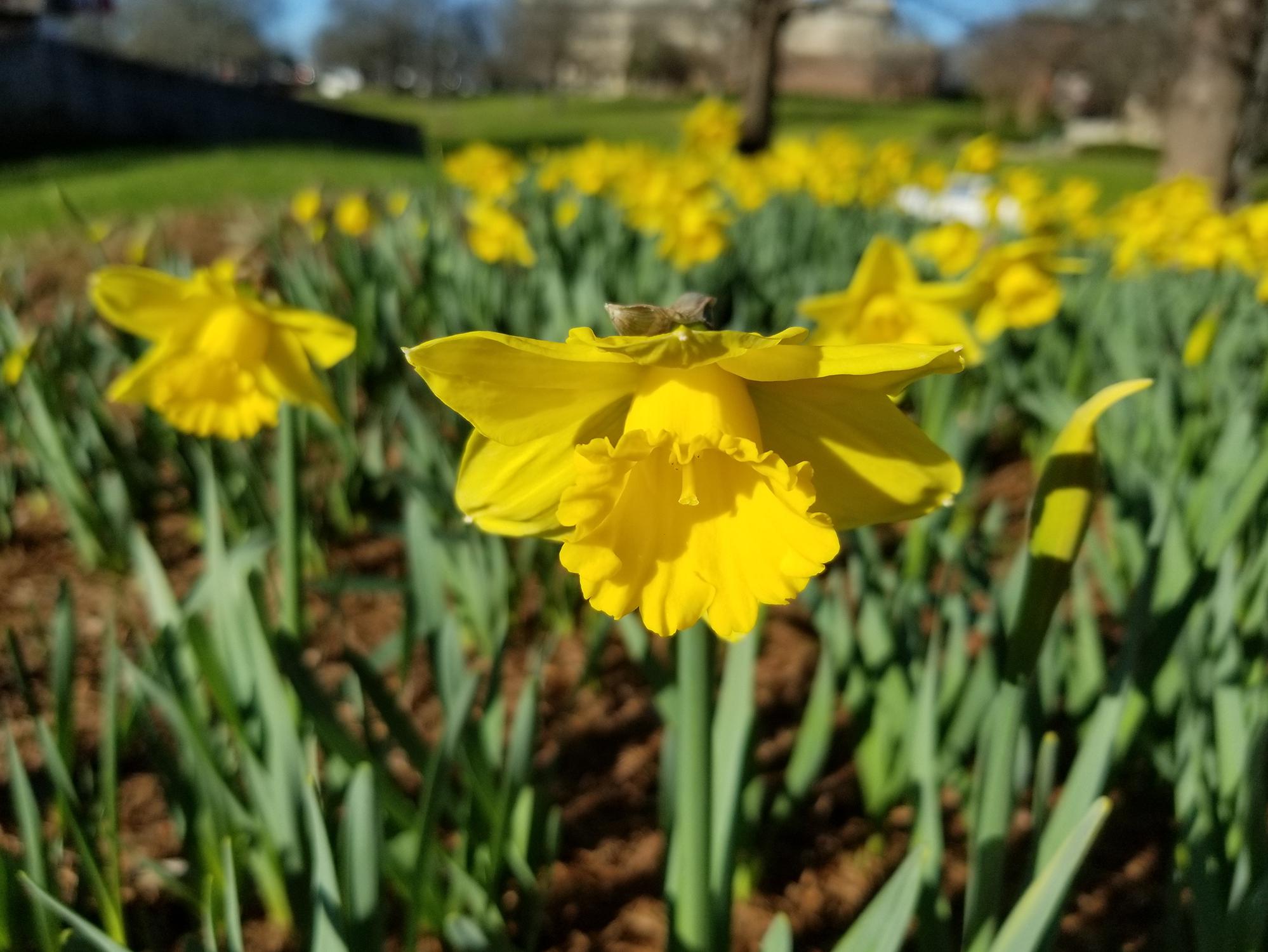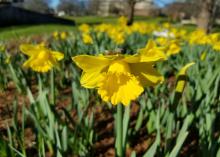Information Possibly Outdated
The information presented on this page was originally released on January 28, 2019. It may not be outdated, but please search our site for more current information. If you plan to quote or reference this information in a publication, please check with the Extension specialist or author before proceeding.
Daffodils bring early spring color into homes, landscapes
One of the signs that spring will be sprung in the near future is when the daffodils start awakening and poking up in the landscape beds.
It’s something I miss living in south Mississippi, as not too many homeowners plant these wonderful bulbs. But a little north of the Coast, daffodil sightings become more common.
I was in Starkville this past week, and the daffodils the Mississippi State main campus is known for were popping. And it’s no wonder, with one of the state’s largest bulb suppliers located in Meridian.
The variety of daffodils is really astounding. Daffodils are placed in 13 different divisions or types. I think all of them are gorgeous. More information is on the American Daffodil Society website at https://daffodilusa.org/.
The downside to these wonderful spring-flowering plants is that the foliage begins to look ratty after the flowers are spent. I always field questions about what to do at this point. Some want to tidy up the landscape by clipping all the foliage off, clipping it in half, or folding the leaves and wrapping them up with a rubber band.
I tend to be a purist regarding daffodil foliage. My response is always, “Don’t touch the daffodil leaves!”
No matter how bad the foliage looks, it plays an important role. Next year’s flowers are being formed during this ratty-looking stage. The leaves gather sunlight and, through photosynthesis, store sugars in the bulb for next year’s growth. Leave the leaves alone for at least 6 weeks.
We can enjoy forcing daffodils, especially paper whites, in the winter months, as everything the plants need is already in the bulbs waiting to grow. We’ve all seen paper white kits with the bulbs already sprouting.
You can tell when the time is right to remove the foliage by gently, and I mean gently, tugging on the foliage once a week. The foliage will easily pull up at the right time.
Deadheading -- the removal of spent flower heads -- is important, as it will maximize the stored sugars in the bulb.
But daffodils are not just for the outside garden. Forcing these bulbs in containers is a good way to bring color and fragrance into the home during the winter. In fact, many other bulbs species can be forced.
I mentioned previously that paper white daffodils are a popular choice. But other bulb species like tulips, hyacinths and the popular amaryllis all can be forced.
Place the bulbs on top of decorative rock without any soil. Add water to just below the surface of the rock. Keep cool and dark until the shoots begin to grow. Move to a warm, sunny spot and enjoy the show.
Find more information on bulb forcing in the Southern Gardening TV segment below.





